#A Matter of Fidelity
Text


Page 100-101: Happy 100 pages to meeeeeee! What a coincidence that this is one of those scenes I've been wanting and waiting to draw for-absolutely-EVER now!
As always, transcription under the cut if you're having trouble reading all that!
First---previous---next
Page 100:
Anne-Marie: That's ridiculous. So you had some troubles as a teen. That's no reason not to-
Kat: Annie. They were going to take one look at my record and assume that I did it. That I was jealous, or something, and I was escalating to violence, just like everyone was always so scared that I would.
Anne-Marie: You don't know that.
Kat: Of course I do. Why do you think I was such a troubled teen, anyway? I hate that word. You and I had the same troubled childhood. But somehow you came out of it as this perfect kid who could do no wrong. Teachers and neighbors and social workers and classmates- everyone loved you. You were smarter and more talented and more hard-working than everyone else.
Page 101:
Kat: And I could never compete with that.
(Voice in the flashback offscreen: Honestly. Your sister never gives me this much trouble!)
(You should try taking a leaf out of Anne-Marie's book.)
(Why can't you be more like Anne-Marie?)
(Why don't you act more like your sister?)
(...and that, my dear, is why you fail where Anne-Marie succeeds.)
(So, tell me about your sister.)
#A Matter of Fidelity#outing myself as a true crime viewer with that first page I fear#we might be heading into another long time in-between uploads as I start a new teaching job#slash new graduate courses slash still working 2/3 part time jobs from this past year#but I'm so glad I got this out before then!
0 notes
Text



Dick chases down Tarantula after she uses a poison dart of one of the ESU guys dick was fighting. He calls Babs for information on the newest cape in town but learns Barbra has no information on her. Dick notices that she has a tarantula theme going on, a tribute to his ex-hero neighbor John Law, while Barbra worries about Dick’s interest catching on the latest lady hero (Nightwing vol 2 #75)
#dc#dick grayson#nightwing#nightwing comics#dickbabs#barbra gordon#catalina flores#bitchy dick#he called this bitch a chicken for using lines 😭 go off king#i hate dickbabs#I hate this#I just decided again#I was mainly neutral#but the immediate worry about fidelity because there’s a new chick running around? awful#no trust#no nothing#HATE ITTTT#(if they aren’t devoted to eachother beyond almost all else with trust that runs deeper than the oceans no matter the other problems they#might have I don’t want it )
8 notes
·
View notes
Text
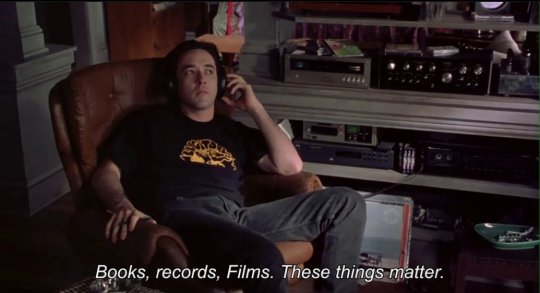
11 notes
·
View notes
Text

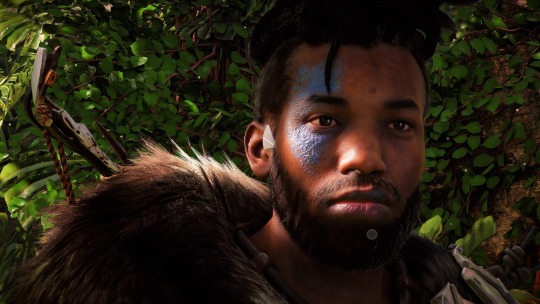


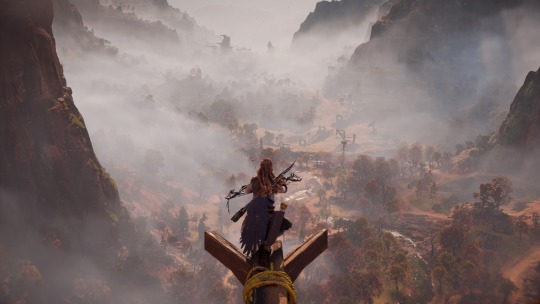
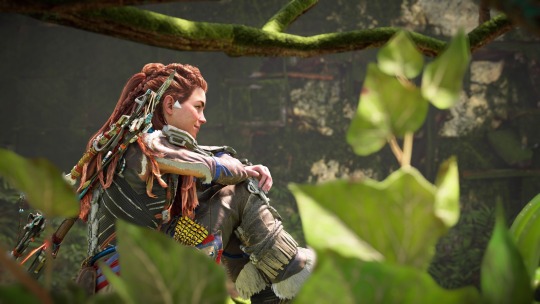
been playing bits and pieces of horizon forbidden west! game's pretty as hell
#horizon forbidden west#photo mode#my edits#yannow. it got me thinking too. the npc fidelity in this game is off the fucking shits. never seen anything like it#even secondary dialogues are leaving all the competition in the dust. it's an insane level of work#major burnout red flags for sure. but also maybe talking about engines as specialized tools instead of ubiquitous ones isn;t so bad?#i mean there's definitely trends. ramming down RPGs down frostbite's throat has never worked well#while decima is tearing up the open worlds and tech fidelity quotas like nbd even on prev gen#is it really about implementation at this point#maybe some engines just. work best for certain types of hard goals. and choosing that right is what matters#i pkayed this after ragnarok and that game looks embarassing next to hfw. and I'm not even saying it flippantly. I stand by what i've said#shorter games less scope lower fidelity etc. for healthier dev teams. but this can be a scalability tell tale? maybe using something#like decima can mean an easier time for a standard EA dev cycle *without* hitting these insane fidelity goals. just thinking out loud#cause forever salty about frostbite. probably wrong but hey! I am on a blogging website famous for its phobia of deeper contexts#or maybe playing as aloy gave me that stupid self confidence juice#the way she bulldozes into delicate foreign policies with nothing but her ego and hutzpah really proves that whiteness is alive and well#in whatever variant of post-post-apocalypse this story is set into. they better interrogate her issues cause otherwise this plot will like#fizzle out under the weight of her self-righteousness lmao
84 notes
·
View notes
Text
having a religious experience listening to music through earbuds that are actually a good quality
5 notes
·
View notes
Text
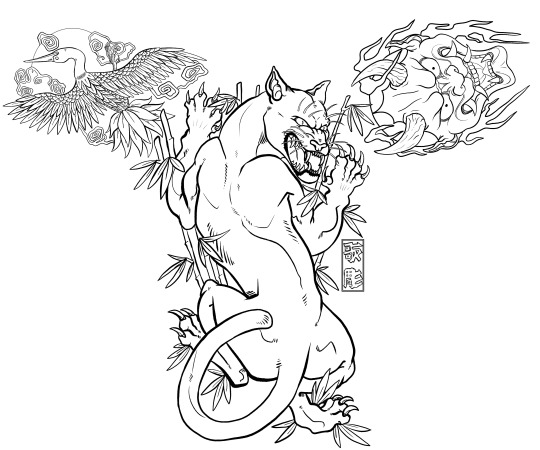
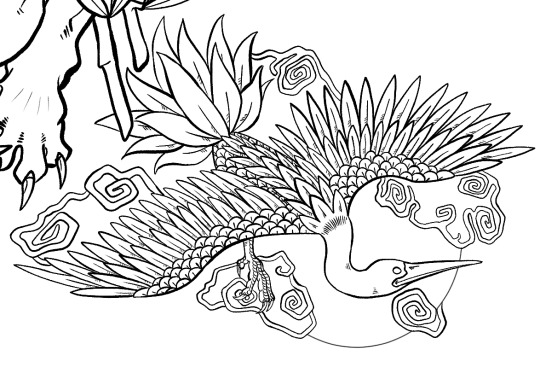
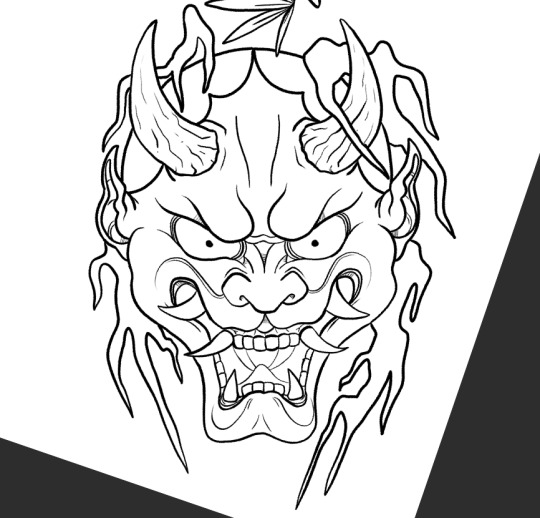
finished the linework for my kashiwagi tattoo design idea :weary:
RGG Studio Hire Me Challenge [IMPOSSIBLE]
#kashiwagi osamu#ryu ga gotoku#rgg#art#irezumi#tattoo design#to explain my thought process#first of all i mean. utabori is a given right.#second: the panther/bamboo#like i say i love the hou-ou designs a lot but they just don't feel right to me idk#like that's akiyama's symbol#panthers are said to embody strength; protection; cleverness; grace; rebirth#tigers are often depicted alongside bamboo to reinforce the symbolism of strength & power; figured i might as well#third: the crane#cranes can represent many things including loyalty/fidelity; long life; family and success; they're also considered to be very strong birds#also it's just a pretty subject matter for a pretty man (biased)#lastly. the oni#mooooostly for the RGGO beat where the guy calls him oni kashiwa#but it along with the panther i like to think represent how hot-blooded kashiwagi was in his younger days when he would have had these inke#artists often depict flames alongside oni and i needed something to fill the space and kinda tie it together & here we are#and that's pretty much it i guess#maybe once i colour it i'll add some of those swirls to bring it together a bit more#will be something to decide once the panther's blocked in tho cause it'd be a LOT of black#also this is a back/shoulders/upper arms piece because#as attractive as a full body suit is#i'm lookin at other ink from the dojima/kazama families and they all mostly seem to just have upper body coverage#and i enjoy consistency
17 notes
·
View notes
Text
.
#''i can't read orv in anything but korean‚'' i try to say‚ ''because i'm stubborn and i don't start with translations unless i have to.''#''no‚'' i respond‚ more clearly and patiently‚ ''you refuse to read it in english‚ because the way the english fandom reads it#is fundamentally warped and strange in ways you feel are completely incompatible with the native language. you are always thinking‚#'he wouldn't say that. they couldn't say that. in korean‚ that's not how it would be said‚ not how it would be thought.'#and you have to remind yourself that it doesn't matter‚ because no one's wrong‚ and it's just unwarranted pride and gatekeeping#that's spoiling it for yourself; a mean-spirited nationalistic thing that's contrary for the sake of it.#it's more than wanting spiritual fidelity that might get lost in translation. you are resentful‚ and feel like you're seeing falsehoods.#in short‚ you are being a cunt. stick to your guns if you must‚ but don't lie to yourself.''
10 notes
·
View notes
Text
Nona the Ninth chapter heading symbols
We’ve gotten a whole bunch of new symbols in Nona in addition to a truly interesting selection of skulls, so I’m listing them out, along with either my guesses for what they likely refer to (key people in bold), or if I have Absolutely Zero Clue, a summary of the chapter. For the verses in the John chapters, see this separate post.
The Locked Tomb, consisting of a round rock chained to a larger rock with a small skull positioned above the round rock – Likely represents Nona herself. Introduction to Nona.
The Locked Tomb – More about Nona’s life.
The Apple Tree, a tree with a single apple hanging from its lowest branch – Likely represents Blood of Eden, for the apple tree in the garden of Eden that held the fruit of knowledge. We learn of the Convoy from Nona’s school friends, which we later find out belongs to Blood of Eden carrying the Sixth House Oversight Body.
Skull of the Seventh – ??? Hot Sauce tells Nona that someone is watching the building, introduction to the Angel and Noodle.
Skull of the Ninth – Big hint that Nona’s body is Harrow’s, from the necromancy session with Palamedes and Camilla’s explanation for why the blue light doesn’t hurt them implying that Nona’s body belongs to a necromancer.
Skull of the Sixth – Camilla tells Nona the story of how she and Palamedes met Nona, alluding to how they came to share a body and the secession of the Sixth House.
Skull of the Second – Nona asks Pyrrha questions about herself, Pyrrha and Palamedes argue which brings up Pyrrha and Gideon’s old winnowing test from Canaan House.
Skull of the Third – Nona makes the fake radio call to Crown (Coronabeth)
Skull of the Sixth – What happened the last time Nona and Camilla went swimming, which is when Camilla and Palamedes temporarily fused when attacked by Merv Wing.
Skull of the Second, broken – (The same kind of broken skull that indicated Harrow’s dream chapters in Harrow the Ninth, which I think in Nona the Ninth indicates a shattering of expectations, a major shift in self-identity, or in this case how the character is broken by their circumstances.) Pyrrha harshly tells Palamedes to leave the people who were to be burned in the park be. ‘“I’m not moved by sentiment. Whatever it takes. Don’t feel. Just do.”’
Skull of the Fifth – ??? Nona asks everyone what they think is sexy, Pyrrha admits that she did go to the park after all and warns Nona about Hot Sauce.
The Apple Tree – Nona, Camilla, and Pyrrha are taken by Blood of Eden to meet We Suffer.
Skull of the Third – Crown brings Camilla/Palamedes and Nona to see Judith and figures out that Palamedes is possessing Camilla.
The Locked Tomb – Crown takes Nona to school. ‘“You darling, I know what you are, even if they refuse to see it,” she said softly. “All I can say, sweetheart, is I envy you more than anyone else in the universe.”’
Skull of the Seventh – ??? Hot Sauce talks to Nona about The Angel, tells the teachers about the broadcast, and talks about her family. Nona tells Hot Sauce her secret, that she’s dying. (Maybe it’s the last one? In Chapter 4 Beautiful Ruby observes that Nona looks sick, which is the first time her secret is alluded to. The Seventh House is obsessed with the dying.)
The Tower, a building with three arched doorways/windows and a conical roof – (Named as such because I think it likely refers to the Tower in the River) The broadcast introduces Ianthe and Kiriona (Gideon), who will later identify themselves as the Tower Princes.
The Sprout, a small sprig of leaves – ??? Pyrrha is missing. Nona accidentally listens to Camilla and Palamedes’ recorded conversation, and asks Varun to help her. Camilla decides that they must go to the spaceport but agrees to go with Nona to school first. The Angel teaches the gang about how to protect themselves, tells them a bit about their background as a zoo director, and gets horrified by Nona’s drawing of a cradle creature. (Pulled this name from the aether. Wondering if the symbol is related to how Varun calls Nona/Alecto ‘green thing’; there’s a few clues here about how Nona is related to the Revenant Beasts. This is the only time in the book this symbol occurs though so I can’t say for sure)
Skull of the Eighth – ??? Palamedes confronts the Angel, who calls for Palamedes/Camilla and Nona to be shot. Pash tells the Angel, Aim, about Nona being the Lyctor project. Camilla and Pash defend the group against Merv Wing while Nona goes to Hot Sauce. Hot Sauce realises that Nona revived from the shot, comes from the Nine Houses, and shoots her.
The Open Tomb, the Locked Tomb symbol with chains broken and an open passage instead of the round rock – Nona throws her third tantrum and wields a chair arm like a two-handed sword, recalling the aspect of her that’s Alecto.
Skull of the First – Crown goes to the barracks to meet Ianthe, who shows off some of her Lyctoral abilities in occupying Naberius’ body and reveals Pyrrha pretending to be the Saint of Duty. (Maybe also how Palamedes refers to his ideas of Lyctorhood? General riffing on Lyctorhood and Sainthood, First House concepts)
Skull of the Third, broken – We Suffer and Palamedes discuss Crown’s betrayal of BOE.
Skull of the Ninth, broken – Planning for Nona to pretend to be Harrow.
Skull of the Sixth – Camilla fights Ianthe and gets stabbed while transferring Palamedes to Naberius’ body.
Gideon’s Skull – Pyrrha and Nona retrieve Gideon’s body, who at the end of the chapter reveals herself to be conscious.
Gideon’s Skull, broken – Gideon/Kiriona is not who we thought she would be. She is the saddest girl in the world.
Skull of the Fourth – ??? We Suffer explains how Merv Wing had been hiding the Oversight Body and Nona recognises the Convoy. Nona goes to Honesty’s apartment to ask for his help, and reconciles with him and Hot Sauce. (I think this one is a little clearer though, the Fourth House is most associated with children and this is the highest point of tension within the gang, further the Fourth House is for fidelity and their confrontation is about their friendship and loyalty to each other)
Skull of the Second – Pyrrha tells Pash about her relationship with Wake. Also, when the Heralds come, Nona gets on the truck and talks to Varun via the Captain Judith Deuteros, who briefly recovers her senses for the second and last time in the book and her calling Nona “Harrowhark” lets Nona admit that she knows who she isn’t.
Skull of the Sixth, broken – Camilla and Palamedes die and become Paul.
Skull of the First – The group begin the plan to take down John Gaius.
The Tower – We see the Tower in the River for the first time.
Skull of the Ninth – The group reach the Ninth House.
The Open Tomb – The Tomb is opened.
Epilogue: Skull of the First – Alecto awakens and goes to stab John Gaius.
#The Locked Tomb#The Locked Tomb spoilers#Nona the Ninth#Nona the Ninth spoilers#love 'the open tomb - the tomb is opened' like no shit sherlock#if anyone wants to try deciphering the ??? chapters my theory is the skulls for houses that don't obviously refer to characters#might refer more to house themes and so children and fidelity for Fourth and sickness and death for Seventh#so if we can figure out how ch11 is tradition and debts to the dead or ch18 might be salvation no matter the cost that'd help my theory#hm now wondering if ch18 parallels mercymorn killing john as nona's best friend hot sauce kills her but it also feels like a stretch
14 notes
·
View notes
Text
super sad that my favorite meaningless conspiracy theory—that Justin Trudeau is the illegitimate son of Fidel Castro—has been repeated in Trump's new book as a charge against Trudeau.
What's fun about it as a theory is that it doesn't matter; that it's entirely superfluous to Trudeau, his policies, or the Canadian government (other than to indicate his parents were left wingers, which is not news). But now that it's getting dragged into USA politics all the fun has been taken out of it 😢
1 note
·
View note
Text

Page 99: Had a rough time with arms and shoulders this page! Jesus Christ, you get the point, right?
First---previous---next
Flashback Kat: ...Annie? Annie!
Kat: It wasn't hard to put together what happened. Someone came in and took you. At the time, I figured it was to stop the launch of the Fidelity. I was going to call the cops, but...
Anne-Marie: But what?
Kat: Think about it, Annie. You still live in San Antonio. The San Antonio cops know me as a thief, and a liar, and they have a long memory. Or worse, someone from the Fleet might show up, and they don't think too highly of me either.
#A Matter of Fidelity#have I ever mentioned before that the twins are from San Antonio?#I was there while I was doing a lot of the initial writing for this story#the rest of the usamerican characters are all from different places around the country but I had to pay homage with the Kestins
0 notes
Text
Ask A Genius 1014: Quantum world informational fidelity shading
Rick Rosner, American Comedy Writer, www.rickrosner.org
Scott Douglas Jacobsen, Independent Journalist, www.in-sightpublishing.com
Scott Douglas Jacobsen: Have you ever seen a slider of an image enhancer? You can slide a vertical line left to right. It allows a before and after back-and-forth of the image, like a before and after acne treatment commercial or something. If Planck-scale quantum…
#a universe with few particles#before and after acne treatment#define themselves in space limited#image enhancer vertical line adding fidelity#increase in size of universe#interactions among matter in universe#Planck-scale quantum systems function below#reasonable theory of universes increase
0 notes
Text
How to Tell Love from Desire: José Ortega y Gasset on the Chronic Confusions of Our Longing
It is a strange thing, desire—so fiery yet so forlorn, aimed at having and animated by lack. In its restlessness and its pointedness, so single of focus, it shares psychic territory with addiction. Its Latin root—dē + sidus, “away from one’s star”—bespeaks its disorientation, its rush of longing, which we so easily mistake for love. And yet, when unplugged from the engine of compulsion and possession, desire can be a powerful clarifying force for the hardest thing in life: knowing what we want and wanting it unambivalently, with wholehearted devotion and fully conscious commitment. In this aspect, desire is not a simulacrum of but scaffolding for love. It shares a strand of that same Latin root with consider, for it is only through consideration—of our own soul’s yearnings and the sovereign soul of the other—that we can truly love.
How to tell love from desire and how to make of desire a stronghold of love is what the Spanish philosopher José Ortega y Gasset (May 9, 1883–October 18, 1955) explores in On Love: Aspects of a Single Theme (public library)—the posthumous collection of his superb newspaper essays challenging our standard narratives and touching self-delusions about who we are and what we want, anchored in the recognition that “people are the most complicated and elusive objects in the universe.”
In a passage that calls to mind Auden’s haunting meditation on true and false enchantment, Ortega considers how our slippery grasp of reality shapes our experience of love:
“It would be outlandish to conclude that, after being consistently wrong in our dealings with reality, we should hit the mark in love alone. The projection of imaginary qualities upon a real object is a constant phenomenon… To see things—moreover, to appreciate them!—always means to complete them… Strictly speaking, no one sees things in their naked reality. The day this happens will be the last day of the world, the day of the great revelation. In the meantime, let us consider our perception of reality which, in the midst of a fantastic fog, allows us at least to capture the skeleton of the world, its great tectonic lines, as adequate. Many, in fact the majority, do not even achieve this… They lead a somnambulant existence, scurrying along their delirium. What we call genius is only the magnificent power… of piercing a portion of that imaginative fog and discovering behind it a new authentic bit of reality, quivering in sheer nakedness.”
Love, Ortega argues, can uniquely pierce the veil of delirium and reveal a greater truth, unlike “inactive sentiments” like joy and sadness, to which desire is akin:
“[Joy and sadness] are a sort of colouration which tinges the human being. One “is” sad or he “is” happy, in complete passiveness. Joy, in itself, does not constitute any action, although it may lead to it. On the other hand, loving something is not simply “being,” but acting toward that which is loved… Love itself is, by nature, a transitive act in which we exert ourselves on behalf of what we love.”
In consonance with Iris Murdoch’s magnificent definition of love as “the extremely difficult realisation that something other than oneself is real,” Ortega observes that the essence of love is an “intense affirmation of another being, irrespective of his attitude toward us.” With an eye to all the things we mistake for it—“desire, curiosity, persistence, madness, sincere sentimental fiction”—he admonishes against the culturally conditioned error of measuring the magnitude of love by the intensity of violent emotion it stirs in us, drawing a crucial distinction between falling in love, as a transient altered state of consciousness drunk on dopamine, and loving, as a continuous mode of being:
“Love is a much broader and profound operation, one which is more seriously human, but less violent. All love passes through the frantic zone of “falling in love”; but, on the other hand, “falling in love” is not always followed by genuine love. Let us, therefore, not confuse the part with the whole.
[…]
The more violent a psychic act is, the lower it is in the hierarchy of the soul, the closer it is to blind physical mechanism, and the more removed from the mind. And, vice versa, as our sentiments become more tinged with spirituality, they lose violence and mechanical force. The sensation of hunger in the hungry man will always be more violent than the desire for justice in the just man.”
We are always, of course, trapped by the limitations of language in communicating the limitless. Observing the difficulty of using a single term to encompass “the most varied fauna of emotions”—the love of science or art, the love of a lover or a child, the love of a country or a cause—and the fact that any term becomes unwieldy when tasked with conveying too many disparate things, Ortega considers what the defining feature of love might be:
“Love, strictly speaking, is pure sentimental activity toward an object, which can be anything—person or thing. As a “sentimental” activity, it remains, on the one hand, separated from all intellectual functions—perception, consideration, thought, recall, imagination—and, on the other hand, from desire, with which it is often confused. A glass of water is desired, but is not loved, when one is thirsty. Undoubtedly, desires are born of love; but love itself is not desire. We desire good fortune for our country, and we desire to live in it because we love it. Our love exists prior to these desires, and the desires spring from love like the plant form the seed.”
Desire is often so difficult to distinguish from love because it is rooted in longing, but longing exists only in absence and evaporates at the moment of attainment, while love grows more saturated the more presence and energy it is given. A generation before the poet J.D. McClatchy contemplated the contrast and complementarity of desire and love, Ortega writes:
“Desiring something is, without doubt, a move toward possession of that something (“possession” meaning that in some way or other the object should enter our orbit and become part of us). For this reason, desire automatically dies when it is fulfilled; it ends with satisfaction. Love, on the other hand, is enterally unsatisfied. Desire has a passive character; when I desire something, what I usually desire is that the object come to me. Being the centre of gravity, I await things to fall down before me. Love… is the exact reverse of desire, for love is all activity. Instead of the object coming to me, it is I who go to the object and become a part of it. In the act of love, the person goes out of himself. Love is perhaps the supreme activity which nature affords anyone for going out of himself toward something else. It does not gravitate toward me, but I toward it… Love is gravitation toward that which is loved.
[…]
In loving we abandon the tranquility and permanence within ourselves, and virtually migrate toward the object. And this constant state of migration is what it is to be in love.”
And yet, he concedes, desire can bloom into love:
“One may sometimes grow to love what he desires: we desire what we love, because we love it.”
The distinction between desire and love, Ortega observes, goes beyond that between the static and the active. Even more crucially, there is the distinction between possession and affirmation, between greed and generosity:
“Desire enjoys that which is desired, derives satisfaction from it, but it offers nothing, it gives nothing, it has nothing to contribute… Love, on the other hand, reaches out to the object in a visual expansion and is involved in an invisible but divine task, the most active kind that there is: it is involved in the affirmation of its object.
[…]
Loving is perennial vivification, creation and intentional preservation of what is loved… a centrifugal act of the soul in constant flux that goes toward the object and envelops it in warm corroboration, uniting us with it and positively affirming its being.”
Couple with Ortega on how the people we love reveal us, then revisit French philosopher Alain Badiou on why we fall and how we stay in love, Thich Nhat Hanh on how to love, and Hannah Arendt on love and how to live with the fundamental fear of loss.
Source: Maria Popova, themarginalian.org (24th April 2024)
#quote#love#desire#fidelity#meaning#all eternal things#love in a time of...#intelligence quotients#depth perception#understanding beyond thought#essential thinking#perspective matters#from the heart#the marriage of true minds#everything you and i#this is how it goes#stands on its own#elisa english#elisaenglish
0 notes
Text
i'm rereading leon hunt's cultographies book on danger diabolik for actual research purposes this time and my new favourite bit is when he's talking abt popular reception of the film including its reception among comics fans, and mentions a forum comment from sometime in the 2000s going well at least it's not the cartoon. and you know what. forum user has a point. at least it's not the cartoon
#specifically discussing fidelity / infidelity adaptation arguments which like. don't really matter#but i do prefer the manetti movies as adaptations. also as movies because i have an unhealthy attachment to diabolik 2021#but you all knew that!#neon has thoughts#diabolik
1 note
·
View note
Text
what you do on your own time's just fine, my imagination's much worse !
#myevilposts#fall out boy#music#this line reminds me a lot of a bit from high fidelity actually lol.#when rob is imagining laura having the best sex ever without him and how it doesn't matter if it's actually that good bc he's imagining#it to be that good.#Spotify
1 note
·
View note
Text
Every time this audiobook is like "Che Guevara was considered by half of the people who spoke to him as being very arrogant and hot-headed" I'm always like Yeah and he was right about everything did you consider that.
#txt#Cuban politics are so awesome but also the drama is very funny#I can't stop thinking about Fidel trying to strategically avoid using the words “communist” when discussing his political ideology#But repeatedly being like “but perhaps you should talk to my VERY GOOD FRIEND Che...”#and Che's way of introducing himself to people was pretty much by being like “Hello I'm an ML. I hate the US. We should steal back Texas”#Very very good very awesome#also love everyone trying to de-Stalinize and Che being THE ONLY PERSON who is like “this is stupid”#LITERALLY THE ONLY ONLY PERSON DURING THE SINO-SOVIET SPLIT THAT HAD SENSE ABOUT THE MATTER#AND WAS LIKE. HEY MAYBE THIS IS A CRITICAL POINT IN THE FUTURE OF OUR MOVEMENT AND WE SHOULDN'T BE DIVIDING OURSELVES LIKE THIS.#(but of course I do not blame Cuba for taking the Soviet side—when Cuba had a material reliance on the USSR at the time)
1 note
·
View note
Text
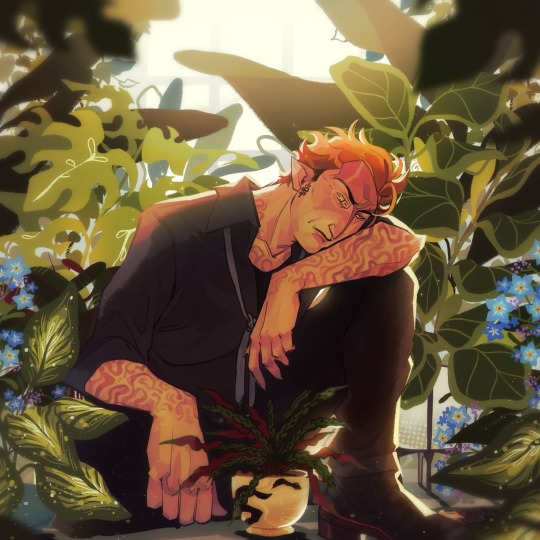
It all started with a garden, supposedly it'll end with one too,
im a sucker for plants and their symbolism- i added 2 that arent in his cannon collection- that being ivy and forgetmenots, ivy can symbolize friendship but also fidelity, devotion and eternal life, forgetmenots often symbolize true love and the such, forgetmenots can also represent a promise that youll keep that person in your thoughts, no matter what. also also i put the rattlesnake plant front and center cause yaknow. . . snake (theres so much i could go off on but i wont for now ((
3K notes
·
View notes